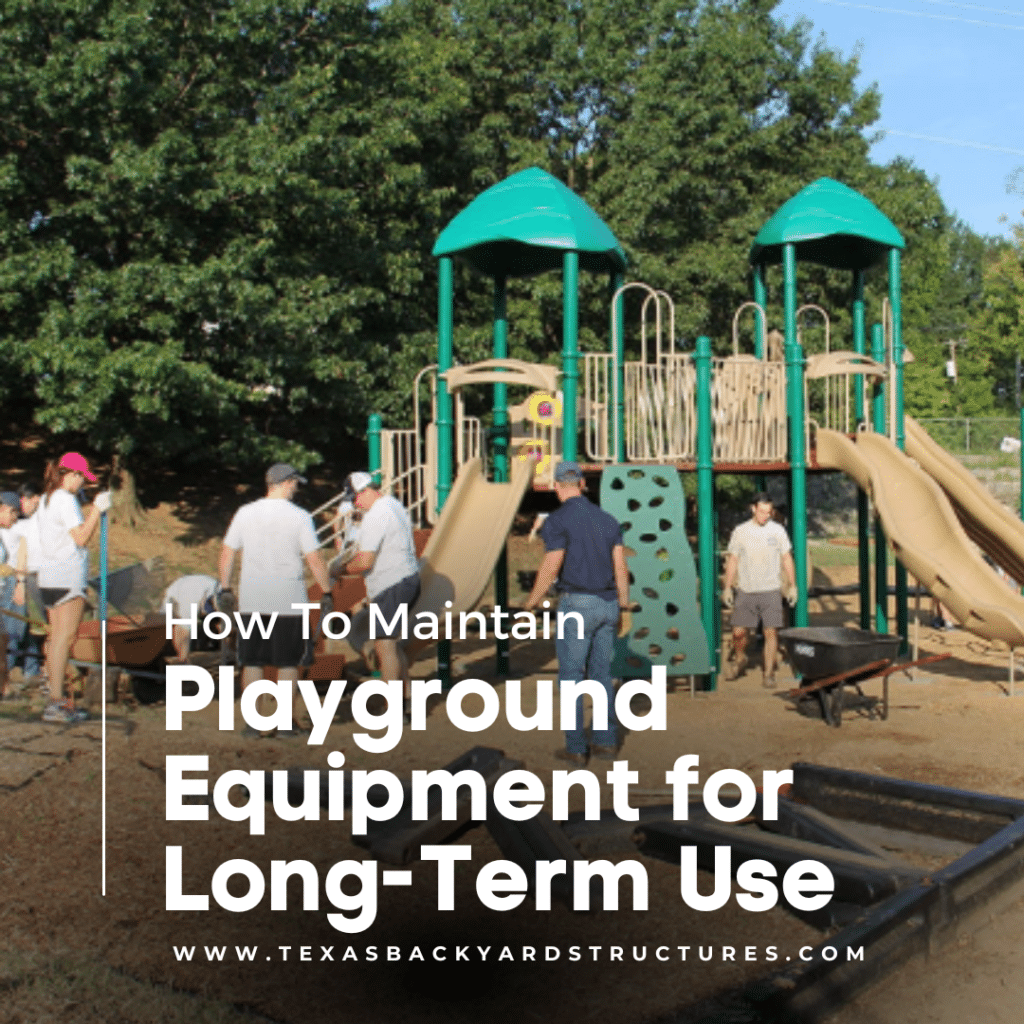Playgrounds provide children with a safe and fun environment to develop their physical, cognitive, and social skills. However, to ensure safety and durability, it’s essential to maintain playground equipment properly. Without regular maintenance, playgrounds can become hazardous, leading to injuries or expensive replacements.
In this blog, we’ll cover the best practices for keeping playground equipment in top condition, the importance of routine inspections, and the role of weather-resistant materials in ensuring long-term use.
Why Playground Maintenance Matters
Maintaining playground equipment is crucial for several reasons:
- Safety: Worn-out or broken equipment can lead to injuries.
- Durability: Proper care extends the lifespan of equipment, reducing replacement costs.
- Compliance: Meeting safety standards ensures playgrounds adhere to regulations.
- Aesthetic Appeal: Well-maintained playgrounds create an inviting environment for children and parents.
By implementing a comprehensive maintenance plan, playground owners can ensure children enjoy a safe and fun experience for years to come.
Routine Inspections and Maintenance Checklist
Regular inspections are the foundation of effective playground maintenance. A structured checklist helps identify potential issues before they become major problems.
1. Weekly Inspections
- Check for visible signs of wear, such as rust, cracks, or loose bolts.
- Remove debris, such as trash, broken glass, or natural hazards (e.g., fallen branches).
- Ensure all fasteners and connections are tight and secure.
- Inspect protective surfaces, like rubber mulch or wood chips, for even coverage.
2. Monthly Inspections
- Assess moving parts like swings, see-saws, and merry-go-rounds for smooth operation.
- Check for structural integrity in slides, climbing structures, and monkey bars.
- Examine playground borders and fencing for gaps or damage.
- Evaluate drainage systems to prevent standing water and erosion.
3. Seasonal Inspections
- Spring: Check for winter-related damage, such as cracks caused by freezing temperatures.
- Summer: Inspect surfaces for heat-related wear and ensure shaded areas are available.
- Fall: Remove fallen leaves and ensure equipment remains dry to prevent mold or mildew.
- Winter: If applicable, clear snow and ice from surfaces to maintain accessibility and safety.
Key Maintenance Practices
To maintain playground equipment effectively, it’s essential to follow key maintenance practices that address both structural and environmental concerns.
1. Cleaning and Sanitation
- Use mild soap and water to clean plastic and metal surfaces.
- Disinfect high-contact areas such as handrails, swings, and slides.
- Remove graffiti and dirt buildup to maintain an inviting appearance.
2. Repair and Replacement
- Replace worn-out parts like swing chains, bolts, or handles.
- Address rusted metal components by sanding and applying rust-resistant coatings.
- Repair cracked or splintered wooden structures with weatherproof sealant.
3. Surface Maintenance
- Replenish impact-absorbing materials like rubber mulch, sand, or wood chips.
- Ensure poured-in-place rubber surfaces remain intact and free of cracks.
- Level out loose-fill surfacing to prevent hazardous dips or uneven areas.
Weatherproofing for Longevity
Playground equipment is exposed to various weather conditions year-round, making weatherproofing an essential part of maintenance.
1. Choosing Weather-Resistant Materials
- Metal: Opt for galvanized or powder-coated steel to resist rust and corrosion.
- Plastic: UV-resistant plastic helps prevent fading and brittleness from sun exposure.
- Wood: Pressure-treated or naturally durable woods like cedar and redwood resist decay.
2. Protective Coatings
- Apply sealants or protective coatings to wooden structures to prevent moisture damage.
- Use non-toxic paint to refresh metal and plastic components.
3. Drainage Solutions
- Install proper drainage to prevent standing water, which can cause erosion and equipment damage.
- Use sloped surfaces or drainage tiles to keep play areas dry and safe.
Training Staff and Encouraging Community Involvement
Proper maintenance requires teamwork. Playground managers, caregivers, and community members can all play a role in keeping playgrounds safe.
1. Training Staff
- Educate maintenance staff on proper inspection and repair techniques.
- Provide safety training for identifying potential hazards.
- Establish a reporting system for maintenance concerns.
2. Community Involvement
- Encourage parents and caregivers to report broken equipment.
- Organize volunteer clean-up days to help maintain playgrounds.
- Work with local authorities to secure funding for repairs and upgrades.
Signs That Playground Equipment Needs Replacement
While maintenance can extend the life of playground equipment, some signs indicate that full replacement may be necessary:
- Extensive Rust or Corrosion: When structural integrity is compromised, replacement is the best option.
- Frequent Repairs: If repairs are becoming more costly than a replacement, it’s time for an upgrade.
- Outdated Designs: Older equipment may not meet modern safety standards and should be replaced.
- Visible Damage: Cracks, splinters, and missing components can pose safety risks.
Conclusion
Maintaining playground equipment is essential for ensuring safety, longevity, and compliance with safety standards. By following regular inspection schedules, implementing key maintenance practices, and weatherproofing materials, playgrounds can remain safe and inviting for years to come.
Encouraging community involvement and staff training further enhances playground upkeep. By prioritizing maintenance, playground owners can provide children with a secure and enjoyable space to play and grow.
A well-maintained playground is an investment in children’s health, safety, and happiness. Start implementing these best practices today to maintain playground equipment for the long term!

